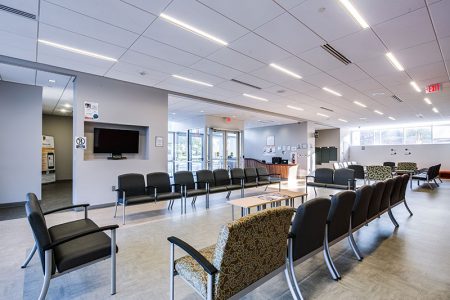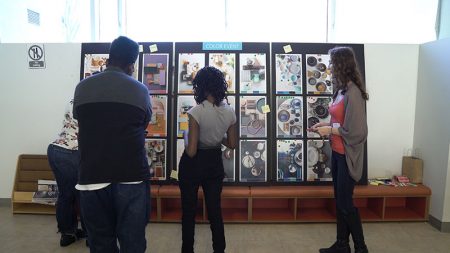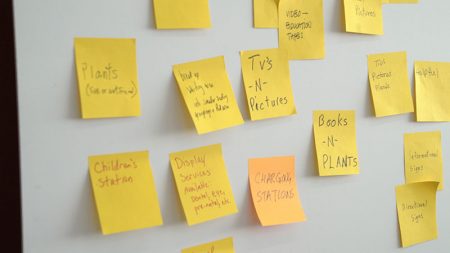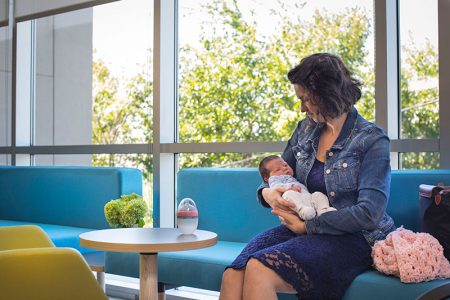Waiting rooms may be distinctive by how nondescript and utilitarian they are. However, just as cities are made unique by their communities, it’s reasonable to say that community-oriented facilities like a healthcare center should reflect local character, too.

Perhaps too often, the end-user is left out of the design process. When Unity Health Care decided to remodel their waiting room at the Brentwood health center in Washington D.C., global architecture firm Gensler saw an opportunity to incorporate and test the effects of patient and staff input on the design intervention. The design team hypothesized that a more contextual design would result in more positive reports from patients and staff. Researchers sought community engagement in the design process, curious to know if it would noticeably impact design solutions or produce an ordinary waiting room. They gathered input in three ways: field observation of how the waiting room is used, community and staff events and staff surveys about the waiting room.
Members of the design team observed the waiting room to study how it was used. People knew the basic functions like where to check in and where to wait, but the waiting room lacked some functionality such as a place to wait for a taxi or a children’s play area. They also observed patterns in creating personal space, such as people taking up surrounding chairs with personal belongings. There was room to improve, and the team knew they had to begin with understanding the community to best reflect and serve it.

During a community event, patients and staff gave feedback on a variety of design elements including colors and patterns presented on boards. Participants marked their preferences with stickers and left comments about why they liked or didn’t like certain combinations or patterns. Viewing the options together provoked conversation among the participants and the design team.
At a story station, participants talked about what makes the Brentwood neighborhood tick, noting that it’s a neighborhood undergoing change with a new transit station and older residential areas, too. The poetry station invited participants to use word magnets to craft free-form poetry and thoughts reflective of their outlook, their hopes for their community and their feelings toward the health center.

In addition, patients and staff provided more general feedback about what they thought the waiting room needed, such as books and plants or health education programming on the television. Overall, the responses indicated an appreciation for bright colors and organic patterns that were interesting, but not too busy or bold. The input directly impacted decisions on color, pattern, art and activities.

As a result of input from patients and staff, designers incorporated a spring-inspired palette of blue, green and yellow, woven fabric upholstery on the furniture, locally inspired macramé art and a quilt wall that features poetry written by patients during the community event.
The effect of the personalized space has been positive for both staff and patients. In self-reported post-occupancy surveys, researchers found a 45 percent increase in employee happiness with the addition of community-inspired art in the waiting area. Patient interviews suggest happiness with the changes, and complaints about wait time decreased by 25 percent.
After the installation, staff have reported that seeing the quilt wall and its poetry reminds them of the joyfulness of why they do what they do. The quilt wall and the macramé art installation have shown to improve the patient’s expectation as well.
